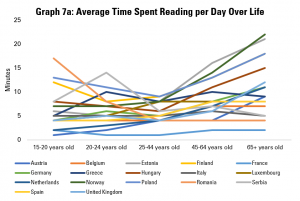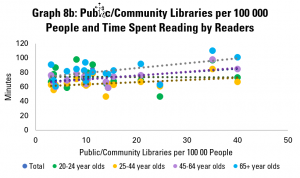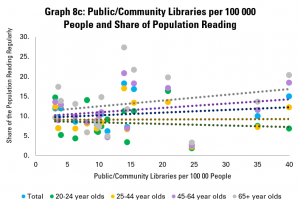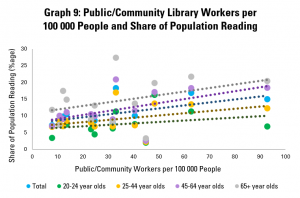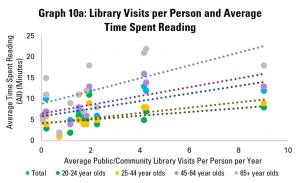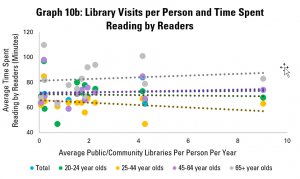2020 was a year of casualties.
Most obviously, there were the million plus people who were lost to COVID-19, and others whose lives were – or risk being – shortened by the consequences of the COVID response on other forms of healthcare.
Screening and vaccination programmes, mental health, and prevention have all suffered.
There have been the pupils and students who have lost weeks or months of formal education, with the highest costs often amongst those who rely most on education as a driver of social and economic mobility.
There has been the economic cost, playing out in businesses closed, jobs lost, and futures upended.
Beyond COVID, the death of George Floyd led to protests that met, often, with a violent response from police. Meanwhile, conflicts continued around the world, and progress towards the SDGs remained insufficient if we are to meet the Global Goals by 2030.
This blog argues that alongside the other casualties, there is a risk that our relationship with access to information may end up being damaged by the events of 2020. However, as it concludes, it is not too late to make it up.
Information as Virus
The first blow came, early on in the pandemic, when the word ‘infodemic’ started to circulate, promoted by the World Health Organization. Others, such as UNESCO, used terms such as ‘disinfodemic’.
Of course in some ways, it is positive to see the power of information recognised in a world where this is arguably all too often taken for granted.
However, the focus in the WHO definition on the idea of an ‘over-abundance’ of information is noteworthy. So too is the implication that information itself (rather than deliberate disinformation, in the case of the UNESCO definition) is a virus.
It seems unlikely that the WHO, given its own positive approach to issues such as open access and science, intended this. However, given libraries’ focus on increasing the amount of information available to people in order to be able to respond to their needs, this is potentially a cause for concern.
From here, it is only a short step to the idea that certain actors should have a monopoly on information provision, with everything else declared invalid or even illegal. This would take us back to the days of only allowing officially sanctioned printing presses – not a desirable move.
If the idea of limiting the amount of information available to people spreads – rather than a focus on providing the guidance and skills necessary to navigate the information available – there is a risk of losing momentum in the drive to bring the benefits of access to information to all.
Information as Potentially Dangerous Good
Closely linked to the concept of an ‘infodemic’ has been the growing pressure on internet platforms to intervene in the sharing of information – and their own readiness to act in response.
Twitter for example updated its policies in 2020, and proved readier to block or label tweets from President Trump. Facebook and others upped their efforts to block misleading content about COVID.
For many though, this has been nowhere near enough, and calls have grown for review of the ‘safe harbour’ provisions that have allowed internet platforms a way to escape liability for content posted by users.
The European Union itself has started the process of updating its own rules, while in the United States, calls to repeal or reform Section 230 are growing louder.
These discussions of course have two angles to them, as the European Union’s own approach recognises. One relates to how to address harmful or illegal content online. The other is a result of the desire to address concerns about unfair competition and impacts on other companies.
However, in the popular discourse, the two issues are rolled together, with changing liability rules for internet platforms seen as a way to solve competition issues. Faced with this, the platforms themselves, as suggested above, have been ready to move to show they are listening and hopefully avoid much more costly competition interventions, such as break-ups or divestments.
Why is this a concern for access to information?
Because a simple shift to increase the liability on the platforms and services that have arguably facilitated much of the explosion in access to information risks leading to the privatisation of the policing of free speech.
In effect, through their terms of use – and their application through pre-emptive filters – platforms would decide what speech is acceptable or not. Without an incentive to promote free expression, the risk of over-blocking is high. Similar rules could end up applying to upstream providers such as ISPs, or even hosting services. As private companies, there would also be fewer requirements for transparency, or opportunities to appeal.
This is indeed an issue already warned about by the former UN Special Rapporteur on Freedom of Expression in 2017. But after 2020, there seems to be a serious risk of it accelerating.
Information as Uncertainty
The final threat to our relationship with information has been the lesson that the pandemic has provided in how knowledge is created and furthered.
We have seen claims made and refuted by scientists, advice issued, changed and updated by governments, and have been faced ourselves with uncertainty in carrying out activities which we previously did unthinkingly.
The pandemic has exposed how incomplete and inconclusive information can be. While this is nothing new for those involved in science, for many, it has not been an easy or comfortable experience.
Rather, it has led to frustration, cynicism, and likely a greater tendency to grab onto the easy answers that conspiracy theories provide.
Clearly, such theories are nothing new, but the pandemic has arguably provided a fertile ground for their spread. These of course can do harm to individuals and groups, as well as to the effectiveness of efforts to tackle the pandemic.
In the longer term, there is a risk that more people are pushed into abandoning curiosity and seeking out easier and more comfortable information. In doing so, they risk falling into the trap explained by Elfreda Chapman in her work on information poverty, rejecting information from outside the group.
Conclusion
The events of 2020 have certainly had am impact on our relationship with information. The idea that there can be too much information, that it is something to be vetted before it is shared, that it is too complicated, all risk making people fall out of love with it.
Faced with this, libraries’ focus on enhancing the amount of information available to people, and focusing on building information skills, can of course risk looking naïve.
There is of course unacceptable information out there – harmful hate speech, abuse, deliberate lies and more. It is not possible to declare that all information is good, and of course, there is no such thing as perfect information literacy or skill.
The question is rather about our starting point in addressing these questions. Do we begin with the position that more information is a positive, unless identified as otherwise, or do we assume that information is bad, unless proven to be acceptable?
Do we put faith in people to be able to navigate their way around information, or do we spoon-feed them?
Do we encourage curiosity, even if it comes with complexity, or rather simply look to make things easy?
For libraries, traditionally, we advocate for the first positions.
While limitations on access and expression may be necessary, these need to be the exception, and applied only when necessary and proportionate, and in a transparent manner. While leaving people room to make up their own minds can lead to mistakes, it is ultimately more desirable than channelling them narrowly. While ready reckoners and simplicity may be attractive, they can set limits on curiosity and innovation.
However, the events of 2020 have seen increasing risks of lawmakers and societies adopting approaches less friendly to access to information. This risks dragging us back to a situation of censorship, slowing efforts to bring people online, chilling expression, and self-imposed information poverty.
As we head into 2021, we need to be able to highlight the costs of over-blocking, censorship and conspiracy theories. But just as importantly, if we want people to come to value and appreciate information, we need to be able to tell the positive stories of how the widest possible access changes lives for the better.
